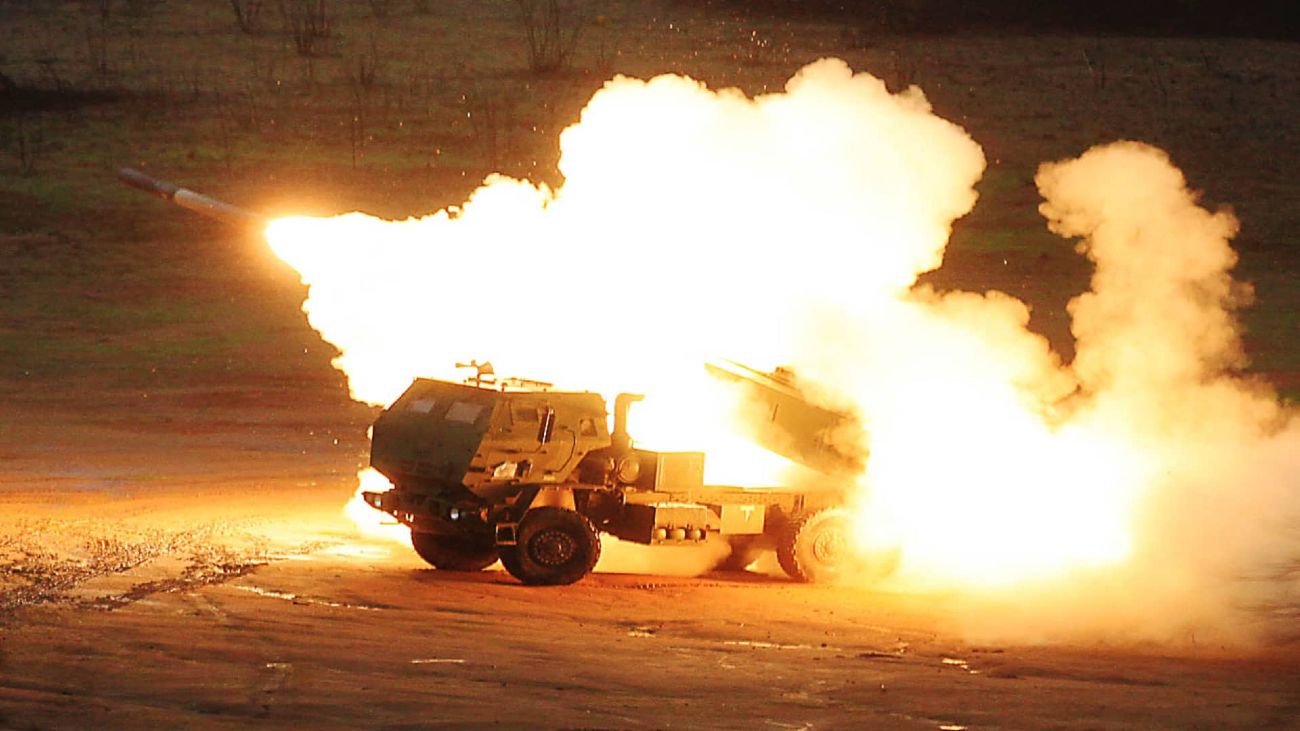The Russian military destroyed dozens of HIMARS rockets and a couple of multiple-launch rocket systems (MLRS) systems in central and eastern regions of Ukraine, according to a recent update by the Russian Ministry of Defense (MoD).
Russian MoD spokesperson Lieutenant-General Igor Konashenkov reported on December 7 that Russian troops destroyed 70 HIMARS rockets and two MLRS in a precision strike against the ArcelorMittal plant in Kryvyi Rih.
“According to the confirmed information, a strike by ground-based high-precision weapons against a missile/artillery armament depot in one of the workshops of the ArcelorMittal metallurgical plant in the city of Kryvyi Rih destroyed over 70 rockets of the HIMARS multiple launch rocket system and two multiple rocket launchers,” Konashenkov said.
In addition to that, four other MLRS systems were critically damaged in the strike, Konashenkov added.
It is not possible to independently verify Russian MoD’s claims, except that a Russian missile did strike the ArcelorMittal Kryvyi Rih plant on December 5. As per Ukrainian sources, one person was killed and three injured in this missile strike.
On the night of December 5, 2022, the Aerospace Forces of the Russian Federation struck the ArcelorMittal Krivoy Rog plant. pic.twitter.com/42BH9Gyq0Z
— Meridionali Aura (@MeridionaliAura) December 5, 2022
Konashenkov further reported that another HIMARS MLRS, along with a cache of ammunition, was destroyed in the Donetsk region.
“A strike against the Ukrainian army’s equipment recovery point in the area of the settlement of Malotaranovka in the Donetsk People’s Republic destroyed a HIMARS rocket launcher and 48 rockets,” Konashenkov said.
Winter Favors Russia
The latest Russian claims of successes against HIMARS MLRS come amid suggestions by experts that the HIMARS system is unsuitable for combat operations in the autumn and winter seasons.
The HIMARS began arriving in Ukraine during the summertime and proved to be a game-changer for Kyiv by turning the tide of the ongoing war in favor of the Ukrainian armed forces.
HIMARS provided the Ukrainian military with a rapid precision strike capability at standoff ranges without the need for air power, thereby allowing the Ukrainian military to compensate for the small size of its air force.
However, a Russian officer of the 1st army corps of the Donetsk region recently told Russian news agency RIA Novosti “the intensity of the use of the MLRS HIMARS by the enemy has significantly decreased” since the start of winter.”

Indian Air Force veteran and military analyst Vijainder K Thakur previously told the EurAsian Times that the Ukrainian Army has been struggling with several issues since the winter set in, such as loss of foliage as cover, the difficulty of building tracks in mud and snow, and the requirement of special fuel and lubricants.
Thakur explained that loss of foliage cover had imposed limitations on HIMARS’ ‘shoot and scoot’ capability, as earlier the American-made MLRS system would launch rockets in rapid succession and then quickly hide behind foliage cover, such as in a nearby forest, however, now there is no greenery to hide beneath because of winter.
This enables the Russian ISR (Intelligence, Surveillance, and Reconnaissance) assets such as drones, satellites, and the Tu-214R reconnaissance aircraft to detect HIMARS more readily, thereby exposing the weapon system to Russian precision strikes.
Russia Claims 100% Interception Rate Against HIMARS?
In addition to destroying HIMARS MLRS and rockets, Russian air defense units allegedly intercepted four HIMARS rockets and other rockets fired by Olkha and Uragan MLRS operated by Ukrainian forces.
“Four rockets of HIMARS, Olkha, and Uragan multiple launch rocket systems were intercepted in the areas of the settlements of Olkhovatka in the Kharkiv Region, Pervomaisk and Frunze in the Lugansk People’s Republic and Volnovakha in the Donetsk People’s Republic,” Konashenkov said.
The Russian air defense troops have received new software that allows them to detect and shoot down HIMARS rockets swiftly.
A commander of a Russian air defense unit stationed in the Zaporizhzhia region recently told local Russian media that the new software allows them to shoot down HIMARS MLRS missiles “without difficulties.”
https://twitter.com/Spriter0000/status/1598664373660225544?s=20&t=5JTrpI6irs-MUN3qUsc1ug
“If at the initial stage the Russian air defense forces did not understand what the HIMARS MLRS missiles were, then after the firmware of the new program, they became a “normal target,” the Russian air defense commander was quoted as saying by RIA Novosti.
“We freely see, observe and destroy without problems,” the Russian commander added while noting that his unit had successfully managed to shoot down approximately 10 HIMARS rockets, including four in November.
Russian experts say that the new software enables the Russian air defense units to make calculations that are roughly 100 percent accurate, thereby allowing them to shoot down HIMARS rockets quickly.
Alexei Podberezkin, the director of the Center for Military-Political Studies of MGIMO, told Sputnik radio, “In principle, even before the new software, 75-80 percent of the missiles that were launched by HIMARS systems were shot down, but not 100 percent.”
Podberezkin further explained that a HIMARS rocket is pretty long, and an air defense missile must strike accurately at its warhead to destroy it.
He also noted that HIMARS rockets are fired from incredibly long distances, and it is important to calculate their course accurately, as minor errors in course calculation will cause the interceptor missile to miss hitting its target.
This is where the software update comes in, as it enables the precise calculation of the rocket’s course to ensure that the rocket warhead is struck.
Overall, Russia seems to have concentrated its efforts on defeating HIMARS, and apparently, those efforts are paying off if the latest Russian claims are anything to go by.
- Contact the author at tanmaykadam700@gmail.com
- Follow EurAsian Times on Google News